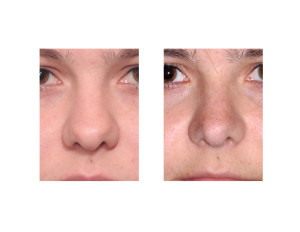There are many technical maneuvers in rhinoplasty that help change the shape of the nose. One of the most historic and commonly used techiniques for the nasal tip (tip rhinoplasty) is that of the cephalic trim. A cephalic trim is the removal of a portion of upper edge of the lower alar cartilages. It is designed to help narrow a broad nasal tip as well as shorten (deproject) and move upward (rotate) the nasal tip.
While a cephalic trim can be a very effective tip reshaping maneuver, it is not completely benign. Weakening of the lower alar cartilage from the cartilage removal can be associated with such postoperative problems such as alar retraction, a pinched tip and over rotation of the nasal tip. Thus it should not be viewed as just a ‘standard’ rhinoplasty technique to be used in all noses.

What makes the cephalic trim less than benign is that it weakens the structural support of the lower alar cartilages and removes attached supportive ligaments. Studies and lot of clinical experience has shown that at least 6mms of lower lateral cartilage width needs to be maintained to keep reasonable structural support. It is also important to realize that the structural support of the lower alar cartilages is going to challenged further when the overlying skin is placed back on top of it and healing and scar contracture occurs.

Dr. Barry Eppley
Indianapolis, Indiana


